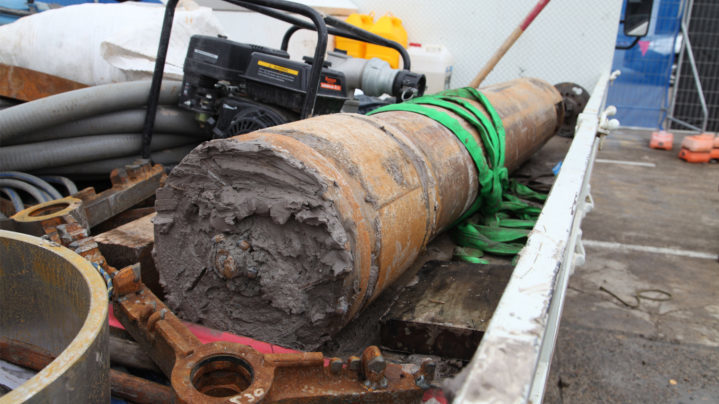Knowing the ground conditions at a jobsite is imperative for completing a successful microtunnelling installation, however incorrect geotechnical information is not uncommon and can cost a project time and money. Here, Stuart Harrison, Managing Director at Edge Underground, discusses the benefits of choosing equipment that can retract when ground conditions are not what they seem.
Mr Harrison said there are a number of factors to take into consideration when when it comes to ground conditions, and the more that the contractor knows, the higher the chance of success.
However, it’s not uncommon for contractors to arrive on site and find the ground conditions are different to the geotechnical information provided.
“The problem is that if you don’t have the right equipment and the ground conditions are different than expected, project costs and time can increase,” Mr Harrison said.
“The key is using a machine that has the ability to retract part-way through an installation, as machines that don’t retract need to be excavated over the head at the point of difference if there is any significant change in the ground.”
Mr Harrison said not only does this become costly both in time and money, it also negates the reason for choosing a trenchless method of installation in the first place.
“Retracting allows you to confirm the geotechnical information is correct, and it results in a higher percentage of successful installations.
“At the end of the day, geotechnical information is often not entirely correct. That’s through no fault of anyone – the core sample and the geotechnical inspection are literally needles in a haystack.
“As you pass every meter of that ground from one point to another, if there’s any changes in the ground, obviously you’re going to find them. Whereas those needles in the haystack could just be in spots where there aren’t any changes of conditions.
“One of the trickiest things is when we come across previous excavations, as many years ago, when deep excavations were reinstated contractors weren’t as heavily critiqued on the style or the material being used as backfill, nor the method of compacting.
“It’s not uncommon for us to be microtunnelling in consistent ground conditions and all of a sudden find ourselves in material that would be consistent with a tip. They’d just backfill it with whatever they wanted to.”
A retractable alternative
Mr Harrison said unlike most microtunnelling machines that can only move in a forward direction, the Vermeer AXIS machine is designed to retract. It performs a pilot line through the ground and if any issues are encountered, it can retract, allowing the contractor to inspect the ground.
“Because the pilot line can be retracted, it allows for different bits to be effectively trialled during the pilot stage. This allows the contractor to assess the best bit for the prevailing ground conditions,” Mr Harrison said.
“Once the pilot is complete, the microtunneller can commence jacking the final product pipe with a far greater likelihood of success, as the ground conditions are now predominantly known.
“Essentially it comes down to one simple concept: risk minimisation.
“When it’s all said and done, we are all looking to reduce the risk on our trenchless projects and using equipment that is able to retract helps minimise the risks of unknown ground conditions before they become a problem.”

